Natural Selection by Liz Ciokajlo
Footwear designer Liz Ciokajlo used natural fibres from coconut husks and flax to create this shoe collection (+ slideshow).
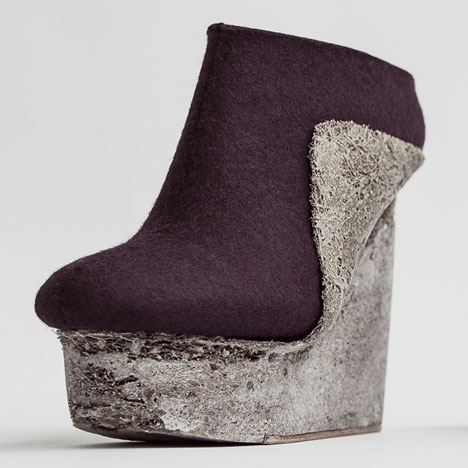
Liz Ciokajlo mixed fibrous materials with bio-resin to set each shoe in a continuous piece.
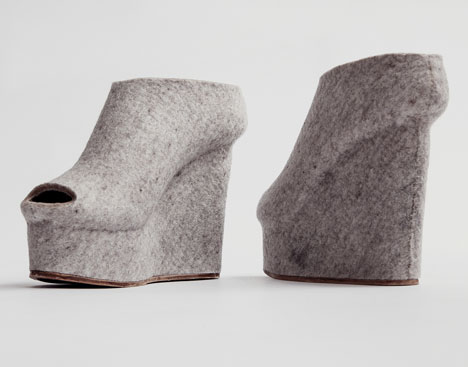
"In the women's footwear world the materials are usually just leather or synthetics, so these other natural materials give a softer approach that is more feminine," the designer said.
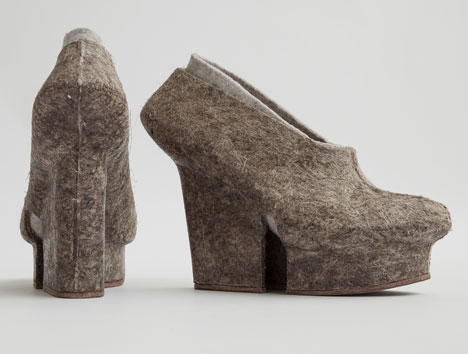
After experiments mixing a selection of fibres in various densities with bio-resin, she created firm but flexible materials to mould into shoes.
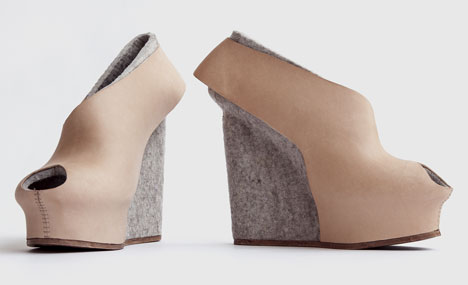
"By concentrating the fibres and adding binders, the properties and characteristics could change, producing both soft and hard material over one continuous surface," said Ciokajlo.
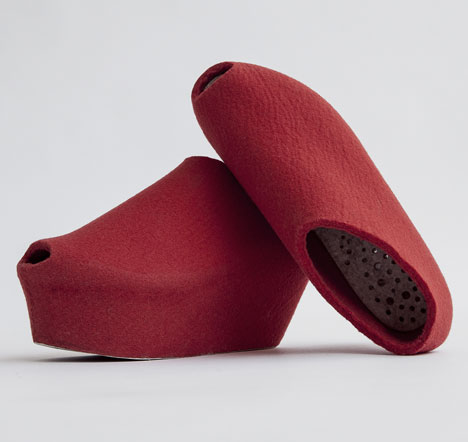
Even though each design looks solid, the heels are hollow to reduce weight and allow air to flow up through holes in the insoles.
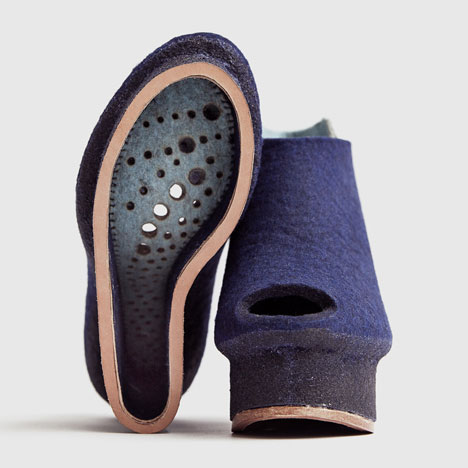
Wool felt lining protects the feet from the scratchy fibres used for the heels and uppers, and a couple of pairs are made entirely from this softer textile.
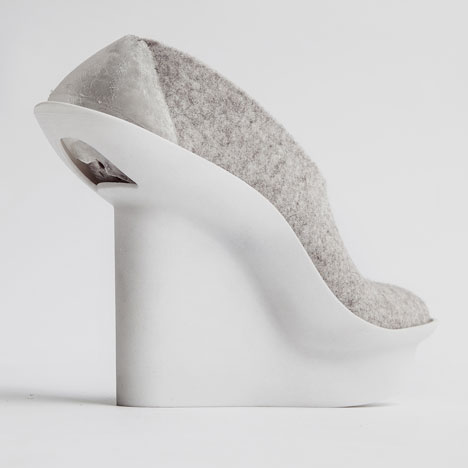
The felt was steamed and then moulded with gauze, a technique often used in millinery design. In some cases it was dyed to contrast with the muted colours of the natural materials.
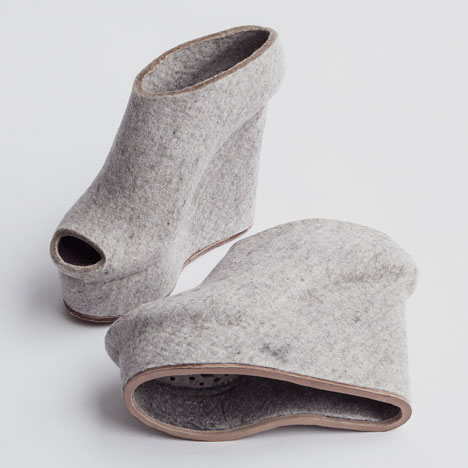
Coconut husk mixed with latex was formed around a mould designed using computer software to create the heel and sides of one pair.
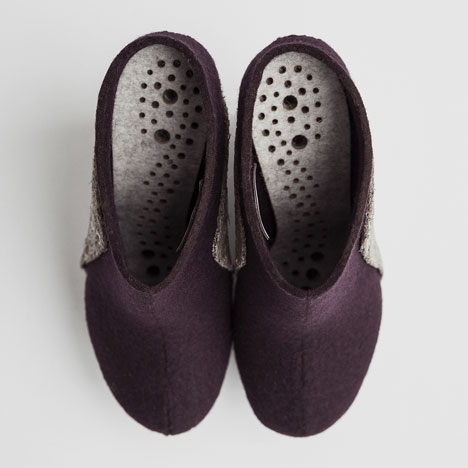
Shoes in hardened flax and sculpted hemp made in the same way also feature in the collection, along with leather elements.

We featured footwear with platform heels made from porcelain earlier this month and recently we ran a feature about shoes designed by architects such as Zaha Hadid and Oscar Niemeyer.
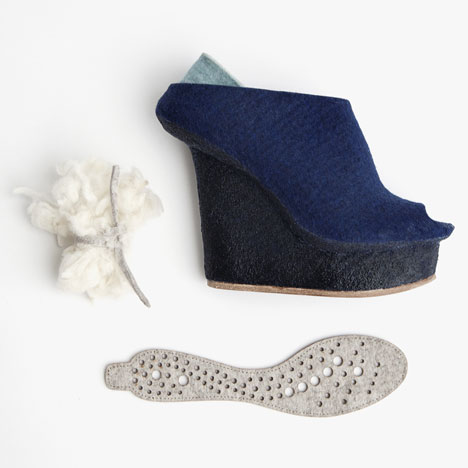
Photos are by Stephanie Potter Corwin.
Here's the information sent to us by the designer:
Liz Ciokajlo is a footwear designer based in London with a background in a combination of product, furniture design and fashion accessories.
This year she finished her Masters in Fashion Footwear at London College of Fashion being the recipient of the Jimmy Choo Dato Cordwainers Award and was one of ten accessory designers in the world chosen to be a finalist in the International Talent Support Competition 2013.
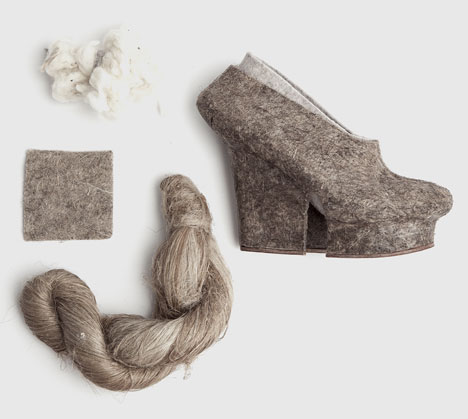
The collection, called Natural Selection, aimed to objectify the shoe. The project started with the examination of how 3D printing could alter footwear architecture and identify new design constructions.
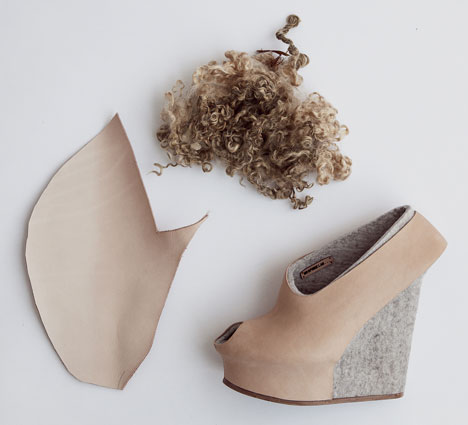
Observations were made that whilst the potential of this new technology offers many benefits the materiality was limited. There seems to be a lack of natural materials used. This lead to the critical theory 3D print is the right process but maybe using the wrong materials?
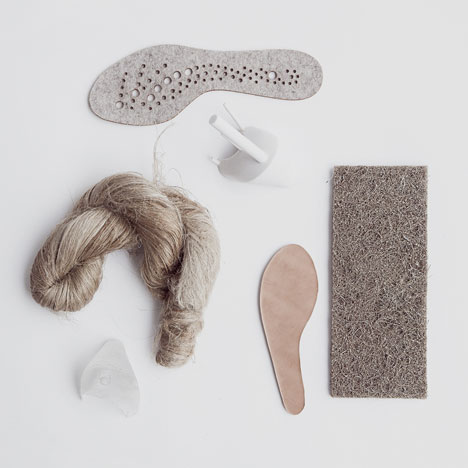
So practical research was made into the use of non-wovens as a potential material arrangement which could be developed by specialists to drive the materials used in 3D print.
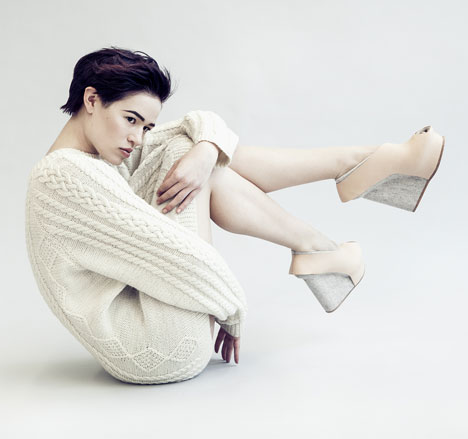
A collection of varied natural non-woven materials were selected and applied to a methodology in a masters educational context. By concentrating the fibres and adding binders, the properties and characteristics could change, producing both soft and hard material over one continuous surface.
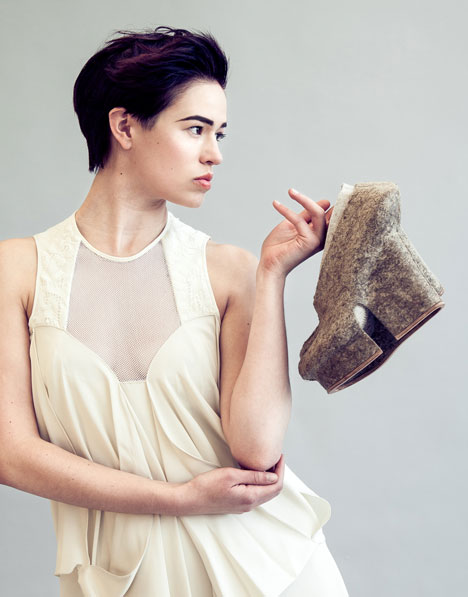
Innovative materials used in the product and furniture industries were "borrowed" and applied to fashion footwear raising further challenges as to what materials are acceptable, in a trend lead fashion context. The design form was the element unifying the collection.
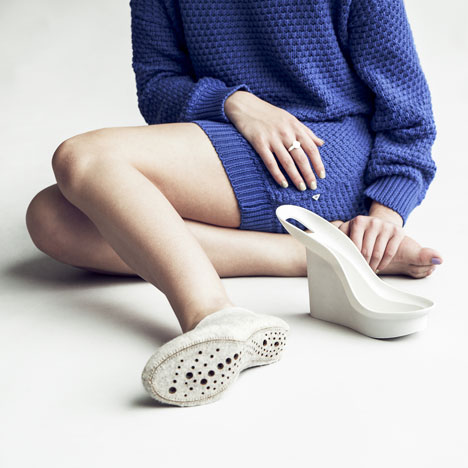
As the project progressed it became evident, synthetic biology will converge with 3D print to offer solutions to these issues. A designer’s understanding of trends and emotional qualities of materials make them key to drive the new technologies in fashion and science.